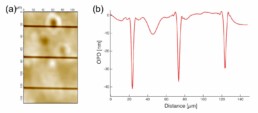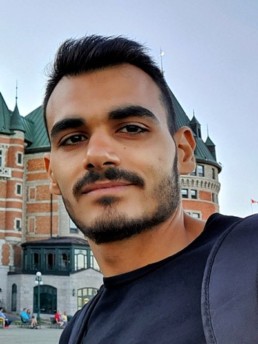SECONDMENT
INTEGRATION OF COMPONENTS AND SYSTEMS IN GLASSES
FROM : UNIVERSITÉ DE BORDEAUX (FRANCE)TO : UNIVERSITÉ LAVAL (QUÉBEC)
FROM : 12 JUNE 2019 TO : 17 JULY 2019
Involved Work Packages :
![]()
RESEARCHER
OBJECTIVES
The secondment consisted on the integration of components and systems in glasses. The main objective of this travel was to start working on the 3D printing of microlenses and light splitters using glasses and/or polymers. These first 3D printed components lead to the fabrication of microscopy on chip.
TASKS
- Designing and optimizing of the 3D printing process of micro lenses and light splitters (STL files, laser parameters, etching process etc…)
- Charactherzing the optical properties of the microlenses and light splitters (transperency, homegenity, focal length etc…)
- Testing the microlenses and light splitters performance
- Assembly of the microlense and light splitter in one single component
RESULTS
The work during my visit at Université Laval was divided into two parts :
Part 1 : Laser writing in glasses
Laser writing in glasses provided by ICMCB in order to try to trigger an important ion diffusion process. Five different glass samples were provided and all of them were irradiated. Some of the samples exhibited bad quality and were not apt to push forward the experiments. However, one glass seems promising. Irradiating this glass sample using a 250kHz repetition rate laser at 1030 nm using a pulse energy of 0.65ˇJ and a writing speed of 1 mm/s exhibited an important optical path as shown in Fig. 1. This could indicate that an important ion diffusion occurred which is promising for selective etching process. In order to investigate more this ion diffusion, a big pattern of 3x3mm2 was written inside such sample. This sample is back at Bordeaux University where we will run test to quantify the ion diffusion and test the difference in the etching rate between the irradiated and non-irradiated glass. For the other glass samples, unfortunately either the quality was bad or the ˘n was not promising enough to push forward the work.

Part 2: Photo-polymerizing hybrid polymers using femtosecond pulses
Prof. Younès Messadeq from the COPL provided liquid hybrid polymers for testing for 3D printing applications. Such polymers are photopolymerized generally using blue light. However, using blue light i.e. single photon polymerization limits the process to only two dimensions (2D). In order to have access to 3D photo-polymerization for 3D printing applications such as micro-lenses, femtosecond laser pulses at 1030 nm are going to be used. A multi-photon absorption process allowe the creation of 3D structures. In order to achieve our goal, a new process needs to be created. The chemical composition of the polymers and the laser parameter need to be optimized. Moreover, a new work procedure is required to observe the photo-polymerization and characterize the 3D photo-polyme-rized structures.
At first, we started by putting some droplets of the liquid polymer between two microscope slides to irradiate the liquid. It did not work, knowing that the upper microscope slide was moving, and the liquid was not stable. Then, a 3D printed mold was created where the liquid will be inside and covered by a microscope slide. However, the surface of the 3D printed mold was not flat, therefore not compatible for the application. Eventually, a 3D printed polycarbonate mold was printed directly on a microscope glass slide. In that case, the surface in contact with the liquid is the glass and flat. After optimizing the creation of the mold, many tests were realized varying the laser parameters from the speed of writing to the laser power. To date, we were not able to observe any photo-polymeriza-tion process or identify it. However, the performed tests allowed us to understand the importance of developing a methodology to irradiate the liquids and characterize the existence of photo-polymerization process.
